The Penguins of Antarctica – Beyonder
The Penguins of Antarctica
When one speaks of wildlife in Antarctica, penguins come to mind immediately. In fact, of the eighteen penguin species in the world, eight live in Antarctica. Some call them awkward, ungainly beings, others call them cute. That’s subjective. What is indisputable is that they are fab swimmers. They use their flippers like wings and their tail and feet as steering rods. They feed on the ocean and come on land to breed and rest. And they have an annual change of wardrobe – they shed all their feathers once a year. They are also math wizards – their ‘huddles’ to stay warm while on land is a precise math exercise! A high school math teacher, who I know, used to say “Math + Instinct = Success”. Seems to work at least for the penguins, I guess… 😉
Some of the interesting species of penguins in Antarctica:
The Emperor penguins of Antarctica
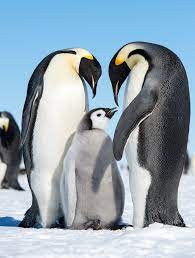 The largest penguin species on Earth. They can grow up to 4 feet in height and about 40 kg in weight. With that height and weight, they still manage to live 15-20 years… The Emperors love the South. They are the southern-most living penguins and when other penguins head north in winter, the Emperors head South to breed! Math skills is how they handle the icy cold – they form huddles so precisely that the center of the huddle can have temperatures of 37 degrees Celsius even when the air temperatures are much below freezing. And then they keep moving so that at regular intervals, the ones in the outermost layer of the huddle get time in the warm center. Imagine the math and its implementation to survive. Hats off to Mr. Martin, my high school math teacher… 😉
The largest penguin species on Earth. They can grow up to 4 feet in height and about 40 kg in weight. With that height and weight, they still manage to live 15-20 years… The Emperors love the South. They are the southern-most living penguins and when other penguins head north in winter, the Emperors head South to breed! Math skills is how they handle the icy cold – they form huddles so precisely that the center of the huddle can have temperatures of 37 degrees Celsius even when the air temperatures are much below freezing. And then they keep moving so that at regular intervals, the ones in the outermost layer of the huddle get time in the warm center. Imagine the math and its implementation to survive. Hats off to Mr. Martin, my high school math teacher… 😉
They are super divers and can dive deeper than any other bird. And can stay underwater for more than 15 minutes! This means they can go deep underwater to feed – mainly fish, squid, krill, etc. They are birds, but can’t fly. However, they make up for this by using their diving skills to go down, fill their feathers with bubbles and then use these to launch their leap onto ice! They manage up to a height of 3 meters with this!
The Adélie penguins of Antarctica
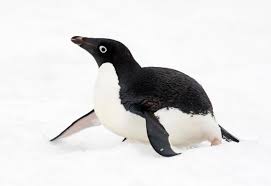 The smallest of the penguins in Antarctica. They can grow up to 2 feet in height and about 6 kg in weight and have an average life of 10-20 years. Killer sharp looks is what they have – black and white coloring with a white ring around their eyes. Like the Emperor penguins, they live permanently in Antarctica. In other aspects, they are more like the Gentoo and Chinstrap penguins (brush-tailed penguins).
The smallest of the penguins in Antarctica. They can grow up to 2 feet in height and about 6 kg in weight and have an average life of 10-20 years. Killer sharp looks is what they have – black and white coloring with a white ring around their eyes. Like the Emperor penguins, they live permanently in Antarctica. In other aspects, they are more like the Gentoo and Chinstrap penguins (brush-tailed penguins).
Their colonies on rocks can be found all along the coast. They make nests with small pebbles. These pebbles are also given as part of a courting ritual. Much like diamonds and other random rocks gifted during engagement or marriage or anniversaries among humans. Unlike humans, stealing of pebbles to gift is an accepted practice among the Adélie penguins… 😉
Their food is mainly krill, though sometimes they eat fish and squid. This is why changes in ocean conditions and global warming makes them quite vulnerable.
Gentoo penguins of Antarctica
 They can grow up to 3 feet tall and 8 kg weight and have an average lifespan of 15-20 years. Their orange beaks and peach-colored feet are a splotch of color in an all-white land. Again stone-nest builders, their colonies are on ice-free rocky beaches. The Gentoo have a varied diet and are not dependent on only krill. Hence global warming and ocean temperature changes don’t impact their survival as much as the Adélie penguins. They can dive but their greatest strength is speed. In fact, they are the fastest penguins on earth – up to 36 km/hour!
They can grow up to 3 feet tall and 8 kg weight and have an average lifespan of 15-20 years. Their orange beaks and peach-colored feet are a splotch of color in an all-white land. Again stone-nest builders, their colonies are on ice-free rocky beaches. The Gentoo have a varied diet and are not dependent on only krill. Hence global warming and ocean temperature changes don’t impact their survival as much as the Adélie penguins. They can dive but their greatest strength is speed. In fact, they are the fastest penguins on earth – up to 36 km/hour!
Chinstrap penguins of Antarctica
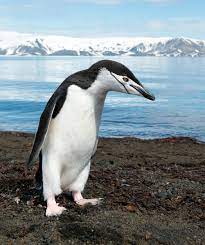 The most numerous penguins in Antarctica. They can grow up to 2.5 feet tall and 5 kg weight with an average life of 15-20 years. They have a black line below their chin connecting to the black crown of their heads. This makes it look like they are wearing a helmet. Hence the name ‘chinstrap’. They are gymnasts and hence build nests in places that others cannot access. The nests are often built on exposed rocky bluffs with hazardous access routes! Like Adélie and Gentoo penguins, they generally lay two eggs. Chicks are born in early summer (December/January), and join creches with other chicks within about a month. By March, they are ready to fledge and begin their life as an adult.
The most numerous penguins in Antarctica. They can grow up to 2.5 feet tall and 5 kg weight with an average life of 15-20 years. They have a black line below their chin connecting to the black crown of their heads. This makes it look like they are wearing a helmet. Hence the name ‘chinstrap’. They are gymnasts and hence build nests in places that others cannot access. The nests are often built on exposed rocky bluffs with hazardous access routes! Like Adélie and Gentoo penguins, they generally lay two eggs. Chicks are born in early summer (December/January), and join creches with other chicks within about a month. By March, they are ready to fledge and begin their life as an adult.
These are world travelers – they have been spotted as far north as New Zealand!
King penguins of Antarctica
 These are the second largest species of penguin reaching up to 3.5 feet in height and 18 kg weight. They have a lifespan of about 25 years. The Kings are stately and graceful with their colorful feathers and orange cheeks. They live in the islands north of Antarctica – they prefer warmer climes. Large colonies in South Georgia of up to 3 lakh loud trumpeting penguins! Imagine the scene… The reason for the noise is because each penguin has a unique call and the partners find each other in the crowd by listening out for their mate’s calls amid all the other calls. Like finding each other in the Kumbh mela by calling out their names.
These are the second largest species of penguin reaching up to 3.5 feet in height and 18 kg weight. They have a lifespan of about 25 years. The Kings are stately and graceful with their colorful feathers and orange cheeks. They live in the islands north of Antarctica – they prefer warmer climes. Large colonies in South Georgia of up to 3 lakh loud trumpeting penguins! Imagine the scene… The reason for the noise is because each penguin has a unique call and the partners find each other in the crowd by listening out for their mate’s calls amid all the other calls. Like finding each other in the Kumbh mela by calling out their names.
The seals of Antarctica are as interesting as the penguins. Would you like to read more on how animals survive through adaptation in Antarctica?
Would you like to read more about Antarctica?
Interested in heading to Antarctica? Check out some of the trips to Antarctica on Beyonder Travel.
If you are keen on checking out some of the other experiences in Asia, Africa or Europe, head to Beyonder Travel.

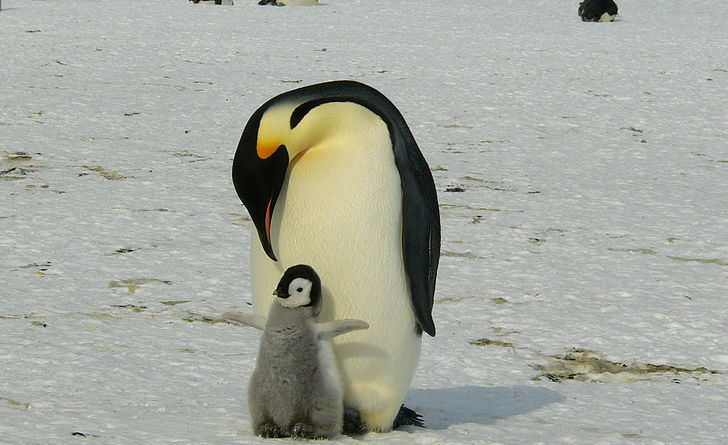


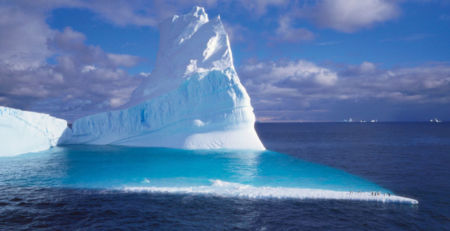

Leave a Reply